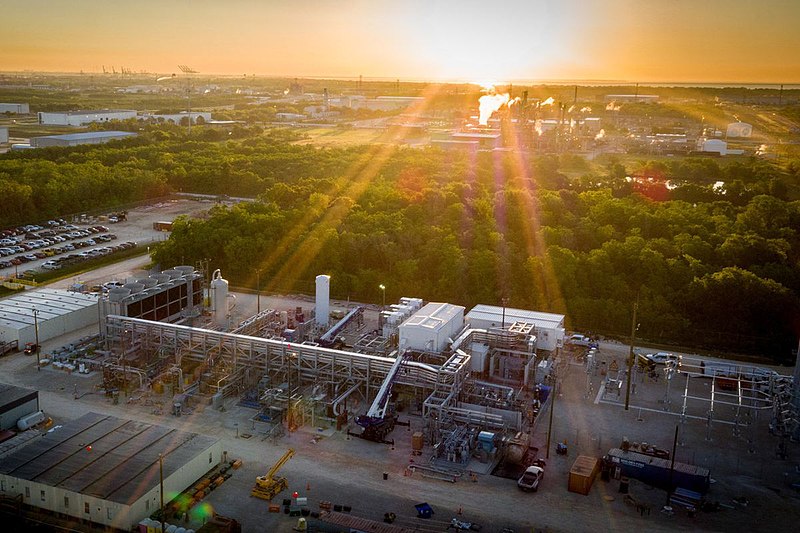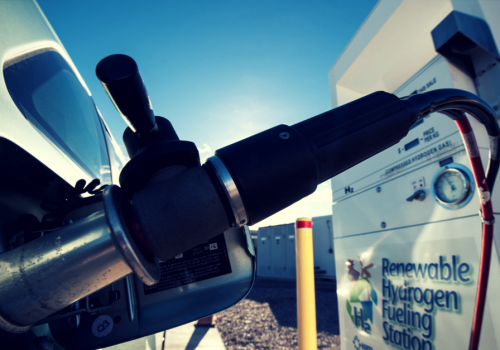Global energy markets are expected to need around $3.6 trillion in annual investment to keep global warming under 1.5 degrees Celsius above pre-industrial levels, and calls are growing for banks and financial institutions to adjust flows of capital accordingly. According to the International Energy Agency (IEA), meeting climate goals would require adding some 2000 carbon capture, utilization, and storage (CCUS) facilities by mid-century—up 100-fold from today. However, until now, CCUS projects have not benefitted from the massive growth in the issuance of green and sustainable debt. The Clean Energy Ministerial’s (CEM) “Key Financing Principles for Carbon Capture, Utilization and Storage” released today includes important recommendations on the coordinated role policy and financial innovation must play to catalyze CCUS deployment. Without such coordination, the incentives and sustainable investing frameworks needed to scale investment in CCUS will fail to materialize, leaving the industry stuck in neutral with significant consequences for our shared climate goals.
CCUS is an enticing proposition, but it requires the mobilization of large amounts of capital. According to one estimate, approximately 6000 industrial plants worldwide are suited to CCUS technologies, and Europe alone could see some $35 billion in spending on CCUS by 2035. However, of the more than $600 billion invested in clean energy and energy efficiency in 2019, little to none flowed into CCUS projects. Key reasons behind such limited investment include the absence of a business model valuing emissions reductions from CCUS projects, as well as the perceived and actual risk of one-off projects. A single CCUS project can involve anywhere from hundreds of millions to more than one billion dollars of capital investment in a technology that has been proven, but not deployed at scale. The multiple technologies and stakeholders required to capture, transport, and store carbon dioxide (CO2) also increase cross-chain risk, or the significant impact that failures at one stage of the supply chain can have on other stages of the supply chain. Analysis by the HSBC Centre for Sustainable Finance confirmed these obstacles, noting that significant market, policy, and operational risk must be overcome for the commercial deployment of CCUS technology.
The CEM’s “Key Principles” document provides a necessary call to action that addresses a fundamental deficit in policy incentives necessary to enable investment from the financial sector, which has been a key barrier to scaling up CCUS projects. The document describes CCUS as “one of the few technologies available that can decarbonize both power generation and industrial sectors such as cement, steel, and chemical production with verifiable emissions reductions.” The ten key financing principles that follow outline a coordinated approach for policy makers, financial institutions, and energy companies to increase deployment, reduce cost, accelerate standardization, and mitigate risk to build confidence in CCUS technology and unlock new financing at a commercial scale. Importantly, it recommends channeling climate finance to CCUS, incorporating CCUS technologies into sustainable investment strategies, and developing novel financial products and markets to expand and invest in CCUS projects.
In the US, the 45Q tax credit—essentially an inverted carbon tax that rewards early movers for deploying CCUS—serves as a useful starting point for building out the toolkit of much-needed policy incentives. Likewise, the European Union’s Innovation Fund, Emissions Trading System, and CCS Directive provide legal frameworks and financial incentives to enable decarbonization projects that include CCUS. These initiatives are a good start, but they are just drops in the bucket of national and supranational incentives at policy makers’ disposal. These measures must be replicated and advanced by additional policy support, such as grants for demonstration projects and a policy-backed build-out of a transport and storage (T&S) network. These incentives would kick-start a carbon management market and make it easier for companies to tap into existing infrastructure to capture their CO2. Proposed policies that increase the eligibility of CCUS facilities for tax-exempt private activity bonds would allow the projects to reap special financial benefits.
A shift away from project-based financing toward technology-neutral investment mechanisms might also broaden the pool of capital instruments available for CCUS financing. Although green bonds—whose market value grew from $1 billion in 2009 to $260 billion in 2018—ostensibly represent an applicable new financing tool, they often do not apply to energy efficiency and emissions reduction projects undertaken by oil and gas companies. Thus, alternative capital instruments are needed to stimulate investment. In fact, a task force of the US Commodity Futures Trading Commission urged in its landmark September 9th report “Managing Climate Risk in the U.S. Financial System” that the financial community should not just be reactive but that its financial innovation can help channel capital into net-zero technologies like CCUS.
Climate-focused corporate bonds that are less ubiquitous than green bonds—but which cover a wider scope of projects—offer potential avenues for CCUS deployment. For instance, transition bonds—whose purpose is to help the seller issue debt to clean up its operations—have gained traction over the past year and present a key financing opportunity for CCUS projects aimed at mitigating emissions in energy-intensive industries. In 2019, the Italian energy group and green bond frontrunner Enel launched the first-ever bond linked to achieving sustainable development goals (SDGs). Meant to replace green bonds, the SDG-linked bonds are tied to Enel’s clean energy goals but can be used for projects of the company’s choosing. Brazilian pulp and paper major Suzano just became the first emerging market company to issue sustainability-linked bonds tied to reducing its emissions by 15 percent over the next decade. While these examples are welcome developments, critics have rightfully emphasized the need for transparency, accountability, and standardization of new financial products. Nonetheless, new products like transition and sustainability bonds could raise money for CCUS projects without linking debt to individual project risk.
The need to scale up advanced energy technologies also incentivizes the development of new financing approaches and carbon market creation. Matching (voluntary) demand for emissions reductions with supply through innovative technologies via markets can propel cost reductions and technology availability. For example, Shopify, an e-commerce platform, launched a sustainability fund that commits at least one million dollars annually to carbon sequestration at any price to kick-start the market and boost its predictability. E-payment provider Stripe made a similar announcement. Standard Chartered likewise launched a Taskforce on Scaling Voluntary Carbon Markets that includes Shell, Total, and BP, companies working at the forefront of next generation CCUS deployment.
Existing policies and incentives in advanced economies like the US and EU provide an initial signal of support to CCUS projects, but they are not nearly enough to drive the level of investment required to reach global climate goals by mid-century. Policy and financial innovation must go hand-in-hand. Scaling up CCUS technology ultimately requires novel policies to enable a carbon management market with broader transport and storage networks that reduce risks associated with one-off projects. Increased use of transition bonds, SDG-linked bonds, and sustainability funds can channel investment to CCUS facilities. A coordinated approach by policy makers, banks, ESG funds, and energy companies is necessary to overcome risk barriers and unlock the new financing to help CCUS realize its full potential as a driver of the energy transition.
Emily Burlinghaus is assistant director at the Global Energy Center, Reed Blakemore is deputy director at the Atlantic Council Global Energy Center, and Lee Beck is a senior fellow of the Atlantic Council Global Energy Center and CCUS policy innovation director at the Clean Air Task Force.
Further reading
Image: NET Power plant in La Porte, TX (Canva Pro)



